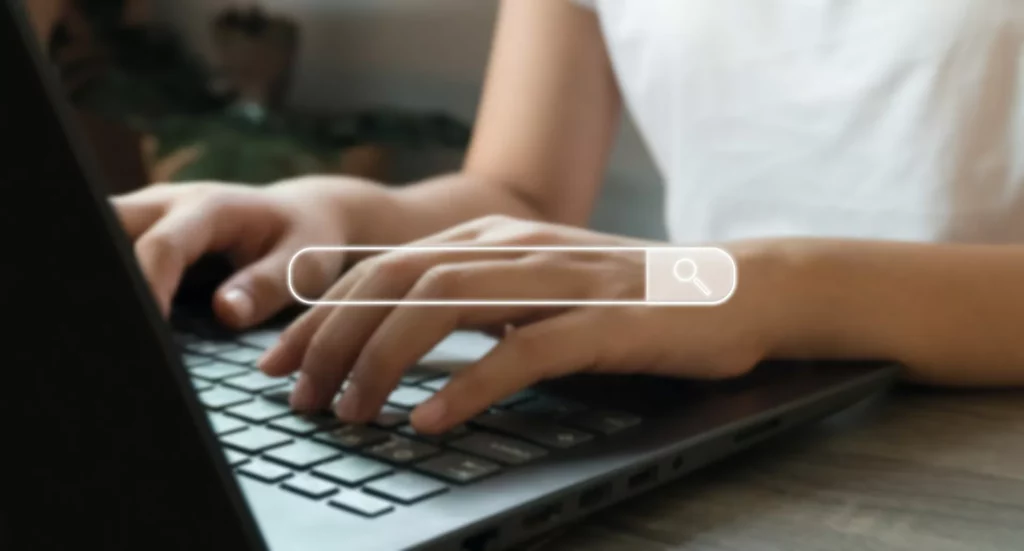The Benefits Of A Learning Organization Culture

Smartphones, tablets, and computers keep getting smarter, and so can we.
The answer to every imaginable question lies in the thousands (or millions) of Google search results you can generate in nano-seconds with one simple query. And if we’re doing our job right, a search engine result may have led you to this blog post.
Today, knowledge is more shareable and accessible than ever. But can you say the same for the knowledge that exists within your company?
If not, it’s time to focus on knowledge sharing by building a learning organization culture.
What is a Learning Organization Culture?
A learning organization culture is a corporate framework in which employees are not only allowed to continue expanding their knowledge, skills, and opportunities to innovate, but encouraged to do so.
Peter Senge, the founder of the learning organization system framework and author of The Fifth Discipline, breaks a learning organization culture down into five dimensions (also called pillars).
Systems Thinking
Systems thinking is a mindset that recognizes an organization as a system of smaller complex systems by taking time to understand the whole as well as each component. For example, if you see your workplace as a system, then the departments, teams, and individuals that make up the workplace are all interconnected components. Technology, processes, and the physical spaces people work in are all part of that system as well, and changing any part of the system has an impact on its interconnected components.
To understand how different components affect one another, let’s look at the example of the shift to remote work, where companies that previously operated out of offices changed their work environments. This shift changes the employee experience (potentially positively or negatively, depending on the employee), changes the way individuals and teams collaborate, changes processes and policies that were based on teams working together in an office, and changes the ways and frequencies with which people use different technologies.
Recognizing the ways different pieces of a large system affect one another helps organizations identify barriers to change, strengthen and build connections, and ultimately create an environment that is conducive to learning.
Personal Mastery
Organizations that are invested in personal mastery give employees the means to become masters of their domain through continued education and skill-building opportunities. Personal mastery doesn’t just involve employees taking in tons of new information like they’re cramming for a test: it involves them “expanding the ability to produce results,” as Senge explains it. In other words, learners must be able to apply what they’ve learned to their work.
So, why should organizations care about personal mastery? Not only can it increase job satisfaction, but it can also increase productivity and grow the organization’s collective intelligence. According to Senge: “Organizations learn only through individuals who learn. Individual learning does not guarantee organizational learning. But without it no organizational learning occurs.”
Mental Models
Mental models are frameworks for thinking that people can use to understand concepts and make decisions. For example, theoretical physicist Richard Feynman developed a mental model called the Feynman Technique to assist students in learning new concepts. This model requires a person to start with a topic or concept they’ve been studying and then explain it the way they would to someone else who is just starting to learn about it. When they get to a point where they can’t clearly explain something, they recognize that they have uncovered a knowledge gap and need to further study this area. After filling in this knowledge gap, they talk through or write out their explanation again. They repeat this process until they have filled all knowledge gaps and are able to explain the concept in clear, simple language.
This certainly isn’t the only mental model out there, but it is a great example of a model that can help people be intentional about learning in the workplace. Mental models help people uncover what they don’t know, and what they may be making assumptions about, so that they can grow their knowledge base and make informed decisions.
Building a Shared Vision
This pillar involves using dialogue, enthusiasm, and commitment to drive action rather than dictating without context. (One way to achieve this is through storytelling.) An organization’s shared vision isn’t something that is developed by the leadership team in isolation and handed down to the rest of the organization. It must be developed by people across the organization based on common interests and goals. Getting everyone involved in the development of a shared vision helps people to feel more invested in that vision’s success.
It’s important to keep in mind that a shared vision will naturally evolve over time. Senge recommends that organizations share their vision where everyone has access to it, discuss it with their teams, and make changes to it as they gain new information and perspectives.
Team Learning
Team learning isn’t just about groups of employees sitting through training sessions together. Rather, it requires teams to use collaboration and mutual creativity rather than groupthink to achieve goals.
Discussion and dialogue are two key components of team learning. In other words, each team member should have an opportunity to contribute their perspective on a challenge or problem the group is trying to address, and everyone should also be able to ask questions and provide additional context and ideas in relation to the perspectives that have already been shared. This allows team members to bring their knowledge together and collectively grow their understanding.
How Does a Learning Organization Work?
Senge explains that the learning organization framework creates an environment where “new and expansive patterns of thinking are nurtured, where collective aspiration is set free, and where people are continually learning how to learn together.”
Adopting this type of culture is not only beneficial to your employees. Fostering a genuine desire for growth can help significantly improve your bottom line—mainly because an innovative, successful business thrives off the solutions its workforce creates.
But all too often, employees feel their only role is to show up, complete their tasks without having any real say, and go home. When no one gives merit to their ideas or acknowledges their concerns about ineffectual policies, they don’t see a point in sharing them.
Which is precisely what you don’t want. Companies rarely achieve success without engaged employees asking questions, gaining knowledge, and challenging themselves and their peers.
Companies and their employees need to focus on learning to learn: a process that involves pairing different individuals, departments, and management styles together. And while the first two will always have their idiosyncrasies, consolidating management styles catalyzes the transition from traditional corporation to pioneer.
Rather than restricting (i.e. following the old way simply because “that’s how it’s always been done”), learning organizations cultivate an atmosphere of open communication and evaluation.
Why is that so important? Your employees are your most valuable resource. And helping them realize it leads to a whole new realm of benefits.
5 Benefits of Creating a Learning Organization Culture
There are five huge advantages companies can enjoy when they make the transition to a learning organization:
1. Improved Innovation
Innovation can’t be forced, but it can be fostered in the right environment. According to Karen Jaw-Madson, management consultant, Co.-Design of Work Experience, and author of Culture Your Culture: Innovating Experiences @ Work, “The right combination of culture, leadership, talent, and approach must work in tandem to set the right conditions for disruption.” She points to Culture Your Culture’s Design of Work Experience as an example of a co-design framework that emphasizes learning while also building culture. “Such a framework could not only bring about desirable change, but further develop innovation capability at the same time.”
Some of the most successful companies in the world—like Google and Facebook—achieved their status by creating a culture where employees have the time and space to learn, explore, and pitch their ideas (no matter how off-the-wall or unconventional they might be.)
When new ideas are not only welcomed but encouraged, employees will engage in more brainstorming and cross-departmental collaboration. Inevitably, the proactive—not reactive—initiatives they develop will reach leadership’s ears, transforming creative concepts into a profitable reality.
2. Knowledge Sharing
It’s no coincidence that each of the five pillars of a learning organization revolves around effectively circulating information. Keeping knowledge siloed within departments—or in the boardroom—means teams are left in the dark. Failing to understand other team’s objectives and hurdles makes it nearly impossible to cooperate.
Giving all of your employees access to the content they need allows them to fully understand corporate challenges and goals. This ensures everyone is on the same wavelength and understands their role in making critical improvements.
3. Problem Solving
As the saying goes, “teamwork makes the dream work.” When people come together to achieve a common goal, the likelihood of success multiples. Each individual brings their own unique experience and perspective, which is especially useful when your organization is facing a complex challenge.
When problems are shared, they’re more likely to be solved. By opening up the conversation and inviting creative solutions from across your company, you can benefit from the collective brainpower of an entire organization. And you may even discover the sources you’ve never thought to consult are the ones who come up with the best answers.
4. Strengthened Community
When employees’ ideas are acknowledged and their feedback is taken seriously, it improves their confidence and level of engagement moving forward. But a sense of contribution doesn’t just boost employees’ pride in themselves—it also promotes pride in where they work. And that can have lasting benefits for everyone involved.
Employees who have input in what goes on behind the scenes will naturally be more invested in the company—and its long-term prosperity. Seeing their efforts impact your organization’s ability to reach its objectives makes employees feel a sense of accomplishment and personal investment, and a responsibility to safeguard that success in the future.
5. Greater Efficiency
A collaborative mindset, coupled with programs that prioritize learning, helps transform teams into perceptive powerhouses. Instead of relying on outside firms, businesses can resolve issues internally, with quicker turnaround times and at a significantly lower cost.
They’ll be more agile and streamlined, with a keen ability to sense when something is heading off track (and the ability to correct it before it causes problems.) And when they can easily access knowledge outside their department, they’ll be able to overcome inefficiencies and drive better outcomes for your customers, too.
No matter your industry, building a learning organization culture can accomplish the same results. By providing the tools to propel growth, you’ll generate a happier, more effective workplace. And that may be the answer to making your company the success story you’ve always hoped to tell.
Note: We periodically update blogs to reflect the latest trends, research, and best practices in knowledge management. This blog was most recently updated and expanded on July 27, 2021.


How to Organize a Knowledge Base: A Step-by-Step Guide

11 Benefits of Knowledge Management (+ KMS Advantages You Shouldn’t Miss)

Start working smarter with Bloomfire
See how Bloomfire helps companies find information, create insights, and maximize value of their most important knowledge.

Take a self guided Tour
See Bloomfire in action across several potential configurations. Imagine the potential of your team when they stop searching and start finding critical knowledge.